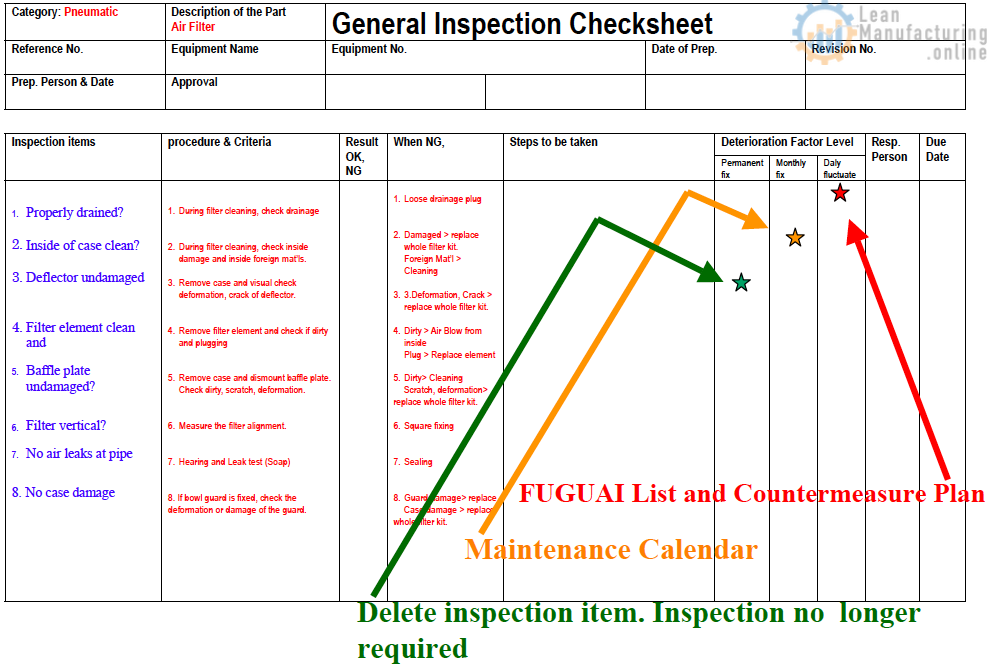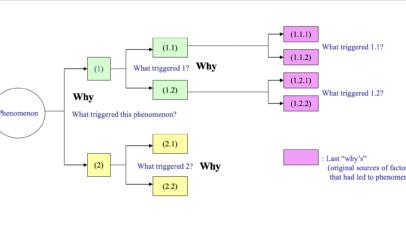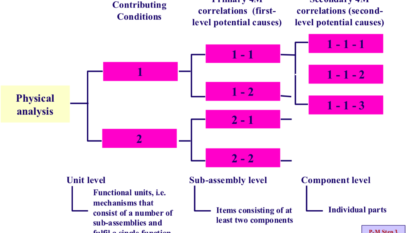A good P-M Analysis satisfies the following three conditions:
(1) It follows the correct thought process
There must be a logical thread running from the phenomenon via physical analysis through contributing conditions, then 4-M correlations, to the phenomenon’s possible causes. This point requires careful attention because many P-M Analyses include lists of factors that are irrelevant to the phenomenon or bear no causal relationship to what has gone before (for example, when secondary 4-M correlations are mixed up with primary 4-M correlations). Of course, care must also be taken not to omit any of the potential causes.
(2) The fault-finding process is correct
• The search for faults must be rigorous and uncompromising
• Measurement techniques must be appropriate (measuring instruments precise enough for the tolerances, properly chosen datum points, and the right measurement methods)
• Tolerances must be set clearly and correctly
• The correct restoration and improvement techniques must be used
(3) The results are satisfactory
If the chronic undesirable phenomenon still remains even if the thought process and the process of identifying faults were correct, it shows that there is some problem with the application of the technique.
The Definition of P-M Analysis
P-M Analysis is a step-by-step procedure designed to eliminate chronic losses. Its definition, and the approach it adopts to eliminating chronic losses, are:
The definition of P-M Analysis: An approach in which an undesirable phenomenon occurring in an operation is physically analyzed in accordance with the operation’s principles and parameters in order to elucidate the mechanism by which the phenomenon arises.
The idea of eliminating chronic losses: List all the factors that could theoretically be considered to affect the phenomenon; check them all without regard to how large or small their contribution might be, and take action against all the discrepancies discovered.
Figure “The P-M Analysis Steps” shows the eight steps of P-M Analysis, with a brief description of each.



















